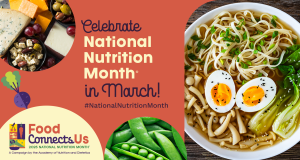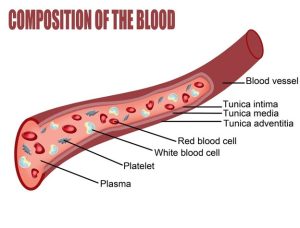
by Claire Davis | Mar 1, 2025
As the warmer months approach, many of us can’t wait to spend time outdoors with our loved ones, enjoying the sunshine and making lasting memories. Whether you’re planning a family vacation to the beach or mountains, a backyard BBQ with friends and family, or a simple picnic in the park, the outdoors offers endless possibilities for fun and adventure. However, as we bask in the sun’s warm rays, it’s essential to remember the importance of sun safety.
Sun safety should be at the top of your priority list, just as you would prioritize packing sunscreen, comfortable clothing, and bug spray for your outdoor excursion. Exposure to the sun’s ultraviolet (UV) rays can increase the risk of skin cancer, premature aging, and other health issues, making it crucial to take proactive steps to protect your skin. The sun’s UV rays can penetrate clouds, glass, and even water, making it difficult to avoid exposure altogether. In fact, the American Academy of Dermatology estimates that one in five Americans will develop skin cancer by the age of 70, making sun safety a critical consideration for individuals of all ages.
In this article, we’ll explore the importance of sun safety and provide you with practical tips to protect your family’s skin. We’ll cover the risks associated with UV exposure, discuss the benefits of sun-protective clothing and accessories, and offer advice on how to choose the right sunscreen for your family’s needs. By the end of this article, you’ll be equipped with the knowledge and strategies necessary to ensure a safe and enjoyable outdoor experience for everyone.
The Risks of UV Exposure:
UV radiation from the sun or tanning beds can cause damage to your skin in just a few minutes. Prolonged exposure can lead to:
1. Skin Cancer: Melanoma, the deadliest form of skin cancer, is on the rise worldwide. According to the Skin Cancer Foundation, one in five Americans will develop skin cancer by the age of 70.
2. Premature Aging: UV exposure can cause wrinkles, fine lines, and age spots, making your skin look older than it is.
3. Eye Damage: UV rays can cause cataracts, macular degeneration, and eye irritation.
4. Weakened Immune System: UV exposure can weaken your immune system, making you more susceptible to illnesses.
Practical Tips for Sun Safety:

Proper sunscreen application is essential to protect skin from harmful UV rays. (Photo source: Adobe Stock)
1. “Slip, Slop, Slap”: Use these three simple words to remember how to protect your skin: Slip on a shirt, hat, or other protective clothing; Slop on a broad-spectrum sunscreen with a Sun Protection Factor (SPF) of 30 or higher; and Slap on a lip balm with SPF.
2. Seek Shade: Whenever possible, seek shade, especially during peak sun hours (10 am – 4 pm).
3. Wear Protective Clothing: Choose clothing with a tight weave, as loose weaves can allow UV rays to pass through. Look for clothing with a UPF (Ultraviolet Protection Factor) rating of 50+.
4. Use a Sunscreen: Apply sunscreen 15-30 minutes before going outside and reapply every two hours or immediately after swimming or sweating. Choose a broad-spectrum sunscreen with a SPF of 30 or higher.
5. Don’t Forget Your Eyes: Wear sunglasses with UV protection to prevent eye damage.
6. Check the UV Index: Plan your outdoor activities according to the UV index, which is a measure of the sun’s ultraviolet radiation.
Additional Tips for Families:
1. Make Sun Safety a Family Affair: Educate your children about the importance of sun safety and involve them in the process of protecting their skin.
2. Create a Sun Safety Routine: Develop a routine that includes applying sunscreen, wearing protective clothing, and seeking shade.
3. Be Mindful of Reflective Surfaces: Be aware of reflective surfaces like water, sand, and snow, which can increase UV exposure.
4. Don’t Rely on Clouds: Up to 80% of the sun’s UV rays can pass through clouds, so don’t rely on clouds to protect your skin.
By following these practical tips and making sun safety a priority, you can protect your family’s skin and reduce the risk of skin cancer, premature aging, and other health issues. Remember, sun safety is a habit that’s easy to develop and maintain, and it’s worth it to protect the ones you care about!
An Equal Opportunity Institution
NOTE: During the preparation of this work the author used the AI tool NaviGator to create an outline for this article. After using this service, the author reviewed and edited the content as needed and takes full responsibility for the content of the publication.

by Samantha Kennedy | Feb 27, 2025

National Nutrition Month helps promote healthy eating for individuals and families. (Photo source: Academy of Nutrition and Dietetics, eatright.org)
Maintaining a healthy diet is more crucial than ever. According to the Academy of Nutrition and Dietetics, a nutritious, balanced eating plan is essential for optimal health at every stage of life. Healthy eating not only helps manage weight and prevent chronic diseases but also boosts mental well-being and energy levels.
Healthy eating involves consuming a variety of foods that provide the nutrients needed to maintain health, feel good, and have energy. These nutrients include protein, carbohydrates, fat, water, vitamins, and minerals. A balanced diet includes fruits, vegetables, whole grains, and lean proteins, which are vital for maintaining a healthy body and mind.
The benefits of healthy eating are numerous. It can reduce the risk of chronic diseases such as heart disease, diabetes, and cancer. Additionally, a nutritious diet supports brain function, improves mood, and enhances overall quality of life. For instance, incorporating more fruits and vegetables into your diet can provide essential vitamins and minerals that boost your immune system and keep you feeling energized.
Beyond its nutritional value, food has a unique ability to bring people together. The theme for National Nutrition Month 2025, “Food Connects Us,” highlights how food plays a significant role in our social lives.
Sharing meals is a universal experience that transcends cultural and geographical boundaries. It fosters a sense of community and belonging, whether it is a family dinner, a holiday feast, or a casual get-together with friends.
Food connects us to our heritage and traditions. Many cultures have specific dishes that are passed down through generations, each with its own story and significance. These culinary traditions are often at the heart of celebrations and rituals, reinforcing cultural identity and continuity.
Moreover, preparing and sharing meals can strengthen relationships. Cooking together can be a fun and educational activity that encourages teamwork and communication. It provides an opportunity to learn about different ingredients, cooking techniques, and cultural practices. Eating together allows for meaningful conversations and the sharing of experiences, which can deepen bonds and create lasting memories.
Promoting both healthy eating and the social aspects of food can be achieved through various initiatives. National Nutrition Month encourages people to make informed food choices and develop sound eating and physical activity habits.
Communities can organize events such as cooking classes, nutrition workshops, and communal meals to educate and engage people in healthy eating practices. Schools and workplaces can also play a role by providing nutritious meal options and creating environments that support healthy lifestyles. Encouraging family meals at home can help children develop healthy eating habits and strengthen family connections.
Healthy eating is vital for maintaining physical and mental well-being. At the same time, food has the power to bring people together, fostering a sense of community and connection. By embracing both the nutritional and social aspects of food, we can enhance our health and enrich our lives.
An Equal Opportunity Institution

by Suzanne Holloway | Feb 27, 2025
Defining Proteins
Proteins are important macronutrients, just like carbohydrates and fats. They are large, complex molecules that play numerous roles in the body. For instance, proteins help in building and repairing structures, performing bodily functions, and regulating various processes within the body. You can find proteins essentially everywhere in the body from bones, muscles, enzymes, hormones, skin, and blood.
About Amino Acids
Proteins are composed of smaller parts called amino acids. These amino acids join together to form long, folded chains known as polypeptides. There are 20 different types of amino acids, each with unique properties. Our bodies cannot produce nine specific amino acids, so we need to get them from our food. There are conditionally essential amino acids, which are necessary only during times of sickness and stress. Furthermore, the body can make nonessential amino acids even if they are not present in the foods we eat. Here’s a quick look at these amino acids:
| Name |
Classification |
| Alanine |
Nonessential |
| Arginine |
Conditionally Essential |
| Asparagine |
Nonessential |
| Aspartic acid |
Nonessential |
| Cysteine |
Nonessential |
| Glutamic acid |
Nonessential |
| Glutamine |
Conditionally Essential |
| Glycine |
Conditionally Essential |
| Histidine |
Essential |
| Isoleucine |
Essential |
| Leucine |
Essential |
| Lysine |
Essential |
| Methionine |
Essential |
| Phenylalanine |
Essential |
| Proline |
Conditionally Essential |
| Serine |
Conditionally Essential |
| Threonine |
Essential |
| Tryptophan |
Essential |
| Tyrosine |
Conditionally Essential |
| Valine |
Essential |

Meat, poultry, fish, dairy, beans, and legumes are all good sources of protein. (Adobe Stock photo)
Recommendations
But how much protein do you need? This varies based on several factors such as weight, height, age, sex, and activity level. Generally, 10% to 35% of your daily calories should come from protein. In terms of weight, it’s recommended that a person consumes about 0.36 grams of protein per pound of body weight. It is important to know that one gram of protein provides four calories.
For a 2,000-calorie diet, the daily intake of protein could range from 200 to 700 calories.
For a 200-pound person, the daily intake of protein could be 72 grams.
To determine your recommended protein intake, use one of the following methods:
- Multiply your daily caloric intake by 0.10 – 0.35.
- Multiply your weight by 0.36.
- Use this Dietary Reference Intakes (DRI) Calculator.
However, if you are pregnant, protein intake should increase. Talk with your doctor about specific protein needs.
When considering your protein source, it is important to consider how it is packaged. You are not just eating the protein found in foods, but the fats, carbohydrates, vitamins, minerals, and other nutrients accompanying it. Ideally, you should choose protein sources that are low in saturated and trans fats and processed carbohydrates. We will discuss the pros and cons of the different protein sources in an upcoming post.
An Equal Opportunities Institution.

by Suzanne Holloway | Feb 5, 2025
February is a month to celebrate matters of the heart—both in love and in health. With Valentine’s Day and American Heart Month, February is the perfect time to cherish our loved ones while committing to a heart-healthy lifestyle. Heart disease is the leading cause of death in the United States, accounting for 1 in 5 deaths in 2022, according to the CDC. By understanding the risks and taking proactive steps, we can build healthier lives, families, and communities.
Heart Disease Defined

© freshidea / Adobe Stock
So, what is heart disease? The term “heart disease” actually refers to several conditions affecting the heart, but the most common is coronary artery disease (CAD). CAD occurs when deposits of Low-Density Lipoprotein (LDL), “bad” cholesterol, and other substances form plaque in the arteries. Over time, this plaque buildup can narrow the arteries, restricting or blocking blood flow.
Other types of heart diseases include arrhythmias (abnormal heart rhythms), cardiomyopathy (abnormal heart muscle), heart valve disease, and heart failure. Understanding these conditions is essential to recognizing potential and current risk factors and acting.
Knowing Your Risks & Making Changes
When it comes to heart health, some risk factors are beyond our control, such as genetics and age. These elements are woven into the fabric of who we are, making them difficult—or impossible—to change. However, lifestyle choices, such as diet, physical activity, smoking, and even some environmental factors can be changed at the individual level. In the United States, nearly half of the population has at least one of these three key risk factors for heart disease:
- Hypertension (High Blood Pressure)
- High LDL Cholesterol
- Smoking
Lifestyle changes—such as improving your diet, staying active, and avoiding smoking—can make a significant difference. Taking care of your heart is much like nurturing a great relationship. It begins with small steps and grows stronger with consistent care, dedication, and some compromises. Your daily decisions about food, exercise, and habits like alcohol and tobacco use play a starring role in your heart health. While you can’t change your genetics, the choices you make today can lead to a healthier tomorrow.
Share the Love
Show your loved ones you care by encouraging heart-healthy habits. Plan an active date, such as a scenic nature walk or a fun bike ride, or cook a delicious and nutritious meal together. Celebrate the month of love by taking charge of your heart health and inspiring others to do the same.
Whether it’s making small changes to your routine, learning more about heart disease, or supporting awareness efforts, every step counts toward a healthier, happier future for you and those you love. Let’s make February a heartfelt celebration of love and health.
Additional Sources
CDC American Heart Month Communications Toolkit
About Heart Disease (CDC)
An Equal Opportunity Institution
by Kendra Hughson | Feb 5, 2025
In recent years, the conversation around mental health has gained significant momentum, particularly in the context of the workplace. As employees increasingly recognize the importance of mental well-being, employers are also beginning to understand that a mentally healthy workforce is not just a moral imperative but a key driver of productivity and overall business success.
The Importance of Mental Health in the Workplace
Mental health issues can significantly impact employee performance, engagement, and retention. According to the World Health Organization (WHO), depression and anxiety disorders cost the global economy approximately $1 trillion each year in lost productivity. The ripple effects can be profound: when employees are struggling with their mental health, it can lead to increased absenteeism, decreased morale, and lower job satisfaction.
Conversely, workplaces that prioritize mental health often see tangible benefits. Organizations that invest in employee well-being report higher productivity levels, reduced healthcare costs, and lower turnover rates. A supportive work environment can enhance employee loyalty, creativity, and teamwork, ultimately contributing to a positive corporate culture.
Creating a Supportive Environment

When employees are struggling with their mental health, it can lead to increased absenteeism, decreased morale, and lower job satisfaction. Photo Credit: Kendra Hughson
- Open Communication: Fostering a culture of open dialogue about mental health is crucial. Employees should feel safe discussing their mental health without fear of stigma or repercussions. Regular check-ins, feedback sessions, and anonymous surveys can help gauge employee sentiment and identify areas for improvement.
- Training and Resources: Providing training for managers on recognizing signs of mental health issues and how to support employees can create a more empathetic workplace. Additionally, offering resources such as Employee Assistance Programs (EAPs), mental health days, and wellness workshops can equip employees with the tools they need to manage stress and maintain their mental well-being.
- Flexible Work Arrangements: The rise of remote work has highlighted the importance of flexibility in maintaining work-life balance. Offering flexible hours or hybrid work options can help employees manage their personal and professional responsibilities more effectively, reducing stress and promoting mental health.
- Promoting Work-Life Balance: Encouraging employees to disconnect after work hours and take regular breaks can prevent burnout. Organizations can set a precedent by respecting personal time and promoting a culture where taking time off for mental health is not only accepted but encouraged.
- Wellness Programs: Implementing wellness initiatives such as mindfulness sessions, fitness classes, or stress management workshops can provide employees with valuable coping strategies. These programs can foster a sense of community and belonging, which is vital for mental health.
The Role of Leadership
Leadership plays a pivotal role in shaping workplace culture. Leaders who prioritize their own mental health and model healthy behaviors can inspire employees to do the same. By being transparent about their struggles and openly discussing mental health, leaders can help break down the stigma that often surrounds these issues.
Moreover, investing in leadership training that focuses on emotional intelligence can enhance leaders’ ability to empathize with their teams, recognize signs of distress, and foster a supportive environment.
Conclusion
As mental health continues to gain recognition as a critical component of overall well-being, organizations must take proactive steps to support their employees. By fostering open communication, providing resources, promoting work-life balance, and investing in leadership development, companies can create a workplace culture that prioritizes mental health. The benefits are clear: a healthier, happier workforce is not only good for employees but also for business success. Embracing mental health as a priority will lead to a more resilient, engaged, and productive workplace for all.
Source: ChatGBT
During the preparation of this work the author used ChatGBT to compile information about mental health in the workplace. After using this tool/service, the author reviewed and edited the content as needed and takes full responsibility for the content of the publication.

by Suzanne Holloway | Jan 10, 2025
January is recognized as National Blood Donor Month, but what makes blood and blood donation so important?
What is blood?
Blood is an essential bodily fluid that constantly flows through your body keeping it working. It has four main components: red blood cells, white blood cells, plasma, and platelets. Each part is designed to specific tasks.

This Photo by Unknown Author is licensed under CC BY-ND
Plasma
The majority of blood—approximately 55%—is composed of plasma. It is yellowish fluid that is a mixture of water, sugar, fats, proteins, and salts. Its main task is to transport blood cells throughout the body, but is also moves products like nutrients, proteins, hormones, and waste.
Red Blood Cells
The second largest component in blood is red blood cells (RBCs), or erythrocytes, making up about 40 – 45 percent of its total volume. These cells contain a protein called hemoglobin, which helps carry oxygen from the lungs to the rest of the body. Hemoglobin also gives RBCs, and the rest of the blood, their distinct red color.
White Blood Cells
White blood cells, or leukocytes, make up a much smaller portion than red blood cells about 1% of the blood. Their role is to protect the body from infections.
Platelets
Unlike red and white blood cells, platelets are not actually cells, but rather fragments of cells. They are the small component within blood being less than 1% of the total volume of blood. Platelets manage bleeding by assisting in the blood clotting process (coagulation) to seal damaged blood vessels to prevent a large amount of blood loss.
What are the blood types?
Blood also contains antigens, and a protein called the Rh factor, which serve as markers that determine a person’s blood type. Based on antigens alone, there are four main blood types: A, B, AB, and O. However, the Rh factor further classifies blood as either positive (+) or negative (-), resulting in a total of eight common blood types: A positive (A+), A negative (A-), B positive (B+), B negative (B-), AB positive (AB+), AB negative (AB-), O positive (O+), and O negative (O-). The most common blood type, in the United States, is O positive (O+); the least common, in the United States, is AB negative (AB-).
| Blood Type |
Approximate U.S. Population Percentage |
| A positive |
33% |
| A negative |
6% |
| B positive |
9% |
| B negative |
< 2% |
| AB positive |
< 4% |
| AB negative |
< 1% |
| O positive |
38% |
| O negative |
7% |
Understanding blood types enables healthcare providers to safely perform blood transfusions and organ transplants by ensuring compatibility between the donor and the recipient. Additionally, those with AB positive (AB+) blood are known as universal recipients; those with O negative (O-) blood are universal donors.
What’s the importance of blood donors?
According to the American Red Cross, someone in the United States needs blood and/or platelets every two seconds. That is about 29,000 units of red blood cells, 5,000 units of platelets, and 6,500 units of plasma needed daily. Nonetheless, there is no substitute or manufactured version for blood, which means it has to be generously donated by volunteers. It is important for surgeries, cancer treatment, childbirth, chronic illnesses (e.g., sickle cell disease), and traumatic injuries (e.g., car accidents). For more information on the donation process and how to prepare for a donation check out this website from the U.S. Department of Health and Human Services (HHS).
To the almost 7 million people in the United States who donate their time and blood, thank you. Your single donation has saved multiple lives, and your generosity is worth celebrating.
Sources
American Society of Hematology
Cleveland Clinic
American Red Cross











